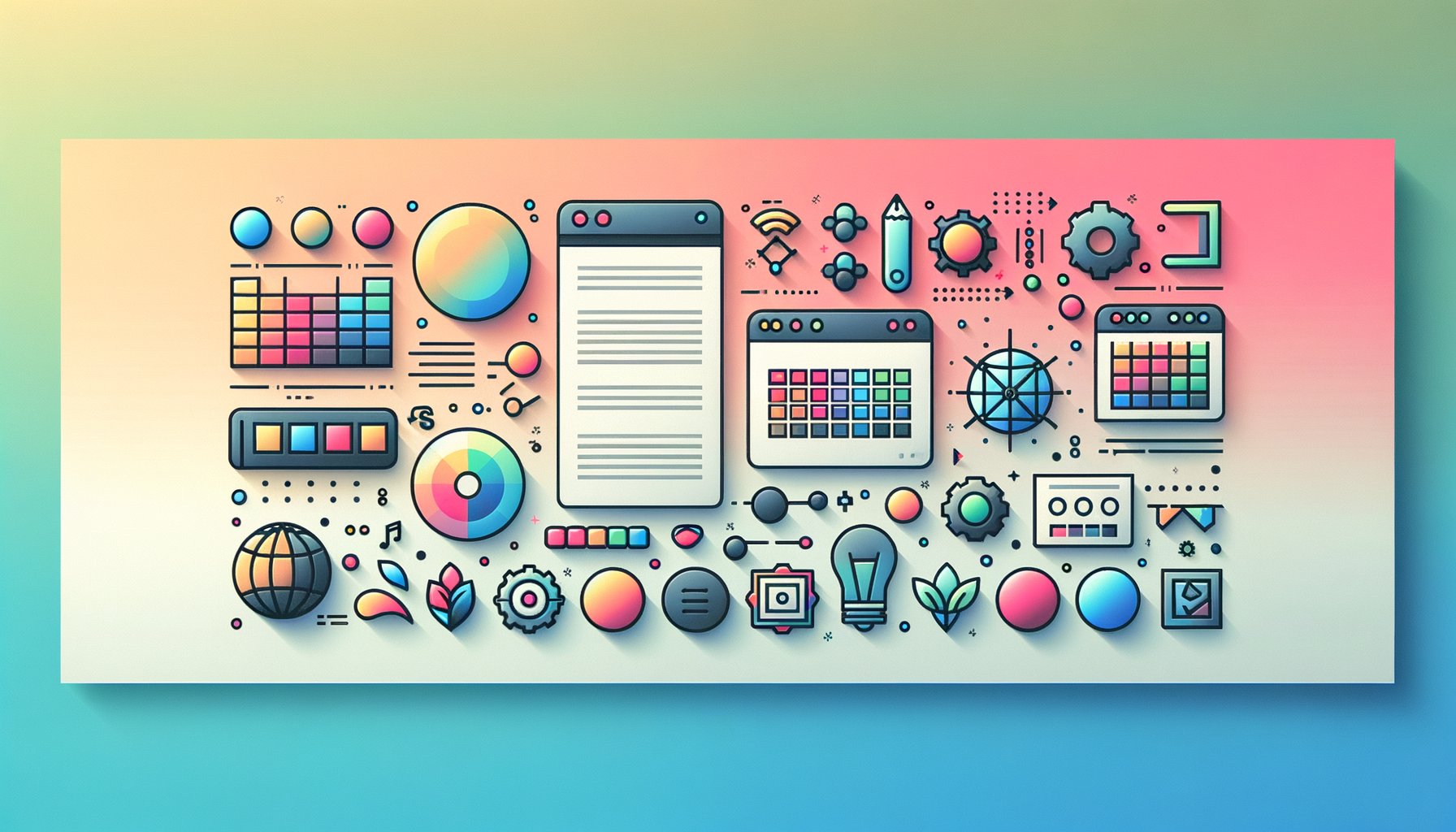
Revolutionizing Digital Aesthetics: Top Web Design Trends of 2024
As we step into 2024, the web design landscape is undergoing a significant transformation, driven by advances in technology, AI, and a heightened focus on user experience. Here are the key trends that are set to dominate the web design scene this year.
The Rise of Denser, Richer Graphics
One of the most notable trends in 2024 is the shift towards denser, richer graphics. Gone are the days of minimalist designs; instead, websites are embracing complexity, color, textures, and patterns to create more immersive user experiences. This trend is facilitated by the rapid advancements in computing power and graphics processing units (GPUs), allowing for swift loading of complex graphics without compromising performance.
For instance, modern processors and improved web browsers enable designers to incorporate high-resolution images and intricate animations, enhancing the overall user experience. As Quinnton Harris, co-founder and CEO at Retrospect Studios, notes, “With computing power becoming more advanced, we’re going to see a lot more dense and rich compositions, including color, wild typography, textures, and patterns.”
AI-Generated Designs and Personalization
Artificial intelligence (AI) is revolutionizing web design by enabling the creation of custom graphics based on user data and design systems. AI-driven personalization allows websites to dynamically adapt content based on user behavior and preferences, offering unique and relevant designs for each user. This trend is expected to continue and expand in 2024, making websites smarter, more intuitive, and more personalized.
AI-powered tools can generate custom graphics per user, enhancing the user experience with dynamic and evolving content. For example, AI can be used to create personalized recommendations, adjust layout and design elements, and even provide instant customer support through AI-powered chatbots.
UX-Focused Design: Elevating User Experience
User experience (UX) has always been a cornerstone of effective web design, but in 2024, it is taking center stage. Designers are prioritizing user behavior, personalized experiences, and seamless navigation. Websites are becoming increasingly intuitive, providing users with content that feels custom-made just for them. This focus on UX ensures that websites are not just visually appealing but also highly functional and user-friendly.
For example, websites like Airbnb and Apple are leading the way in UX-focused design, emphasizing ease of navigation, fast load times, and accessible content. These elements are crucial in creating an immersive and engaging user experience that captivates, informs, and converts visitors.
Kinetic Typography and Interactivity
Kinetic typography is another trend that is gaining traction in 2024. This involves adding motion to text to make it more engaging and dynamic. Combined with interactivity, kinetic typography transforms websites into engaging narratives that invite user participation. Storytelling through dynamic visuals and animations is becoming a key element in modern web design, making websites feel more alive and interactive.
Bold Aesthetics and Unconventional Layouts
The traditional grid system is being broken free from, and bold color palettes along with unconventional layouts are becoming the norm. This shift towards bold aesthetics is part of a larger trend that prioritizes creativity and expression in web design. Designers are no longer constrained by traditional norms and are instead leveraging advanced technologies to create visually striking and emotionally resonant websites.
Accessibility and Inclusivity
Accessibility and inclusivity remain at the forefront of web design trends in 2024. Ensuring that web experiences are seamless and enjoyable for all users, regardless of their abilities or devices, is a critical aspect of modern web design. This includes designing websites that are compatible with various devices, have clear navigation, and provide accessible content for users with disabilities.
Real-World Examples and Case Studies
To illustrate these trends, let’s look at some real-world examples. For instance, Stripe’s website is a prime example of UX-focused design, with a clean and intuitive interface that prioritizes user experience. Apple’s website, on the other hand, showcases the use of bold aesthetics and kinetic typography to create an engaging and dynamic user experience.
Leveraging Advanced Technologies
The integration of cloud computing, AI, and machine learning in web design is empowering designers to create dynamic, personalized, and inclusive websites. These technologies allow for real-time adaptation to user preferences and behaviors, making each interaction unique and relevant. For example, hosting services like Kinsta offer advanced infrastructure that supports these design-intensive sites, ensuring fast load times and optimal performance.
Conclusion and Next Steps
In conclusion, the web design trends of 2024 are a testament to the innovative and transformative power of technology and AI. By focusing on denser graphics, AI-driven personalization, UX-focused design, kinetic typography, bold aesthetics, and accessibility, designers can create websites that are not just visually stunning but also highly engaging and user-friendly.
If you’re looking to stay ahead of the curve and incorporate these trends into your web design projects, consider reaching out to Belov Digital Agency for expert guidance and support. Our team is dedicated to helping you create websites that resonate, engage, and inspire your audience.
For more insights into web design trends and how to implement them effectively, check out our other blog posts on web design and development. Stay updated with the latest innovations and predictions in the web design world to ensure your website remains competitive and engaging in 2024 and beyond.













